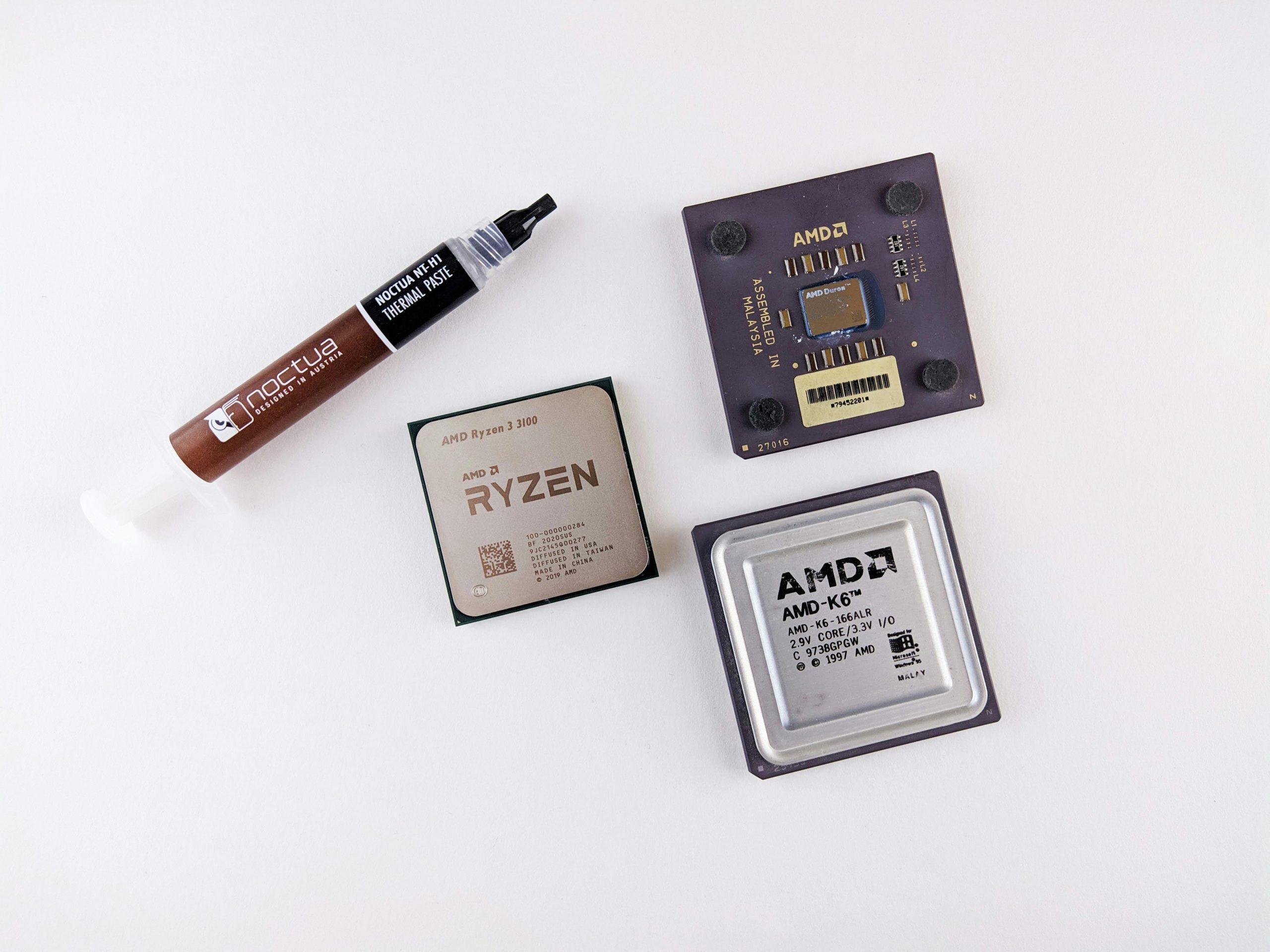Troubleshooting Core Performance Boost Issues with the Ryzen 7 7700X: A Comprehensive Guide to Stabilizing Your Gaming Experience
Assembling a high-performance gaming rig is an exciting endeavor, especially when integrating powerful components designed to unleash unparalleled gaming experiences. However, encountering issues such as game crashes can be frustrating and disheartening, particularly when your setup comprises top-tier hardware like the AMD Ryzen 7 7700X processor and the PNY RTX 3080 Ti graphics card. In this blog post, we’ll delve into potential causes and solutions to address game crashes associated with Core Performance Boost (CPB) in Ryzen processors, with a detailed exploration of related settings and strategies to optimize your gaming setup for reliability and performance.
Understanding Core Performance Boost (CPB)
Core Performance Boost is a feature in AMD Ryzen processors that automatically increases the processor’s clock speed beyond the base rate, depending on the thermal and power headroom, as well as real-time workload requirements. It aims to enhance performance, especially in demanding applications like gaming. However, CPB can sometimes introduce instability, particularly when other system components are not configured optimally, leading to unexpected game crashes, and in severe cases, system reboots.
Exploring the PC Build
Before diving into specific solutions, it’s crucial to understand the components making up your rig:
- Processor: AMD Ryzen 7 7700X
- Motherboard: Gigabyte B650m Gaming WiFi
- RAM: G.Skill Trident Z5 Neo RGB 32GB (2 * 16GB)
- SSD: MSI Gaming SPATIUM M482 PCIe 4.0 NVMe M.2 2TB
- GPU: PNY RTX 3080 Ti
- PSU: Corsair RM1000x 1000 Watt Fully Modular
- Cabinet: Deepcool Mattrex 55 Mesh
Common Symptoms and Initial Troubleshooting
Crashes, such as those experienced with games like “Spider-Man Remastered,” “Wuthering Waves,” “Ghost of Tsushima,” and “Marvel Rivals,” can manifest as freezes, application crashes to the desktop, or total system restarts without a Blue Screen of Death (BSOD). Before delving into more complex solutions, check for the following:
-
Driver Updates: Ensure that all drivers, particularly GPU and chipset drivers, are up-to-date. Check the manufacturer’s website for the latest version.
-
Operating System Updates: Make sure your operating system is fully updated, as patches and updates often contain essential fixes for hardware compatibility issues.
-
Temperature Monitoring: Use software like HWMonitor or Ryzen Master to monitor CPU and GPU temperatures. High thermal levels can exacerbate instability.
-
Power Supply Integrity: Verify that your power supply unit (PSU) is functioning correctly and is sufficiently powerful to handle your setup, which, in this case, should be adequate considering the Corsair RM1000x’s 1000-watt capacity.
Delving into BIOS Settings
The BIOS houses critical configurations that can impact system stability. The Core Performance Boost setting, in particular, has been identified as a potential culprit in this setup.
Disabling Core Performance Boost
Disabling CPB was a successful initial workaround for maintaining stability during extended gaming sessions with “Wuthering Waves.” By turning off CPB, the processor operates at its base clock speed, which can reduce thermal and electrical stress on the CPU, but potentially at the expense of peak performance.
To disable CPB:
-
Restart your computer and enter the BIOS by pressing the appropriate key (often Delete, F2, or Esc) during startup.
-
Navigate to the overclocking or OC settings menu. The exact menu may vary depending on the motherboard BIOS version, but it is typically found under “Advanced Frequency Settings” or a similar sub-menu.
-
Locate the “Core Performance Boost” option and set it to “Disabled.”
-
Save and exit the BIOS.
With CPB disabled, monitor your system’s stability and performance under typical gaming workloads.
Exploring Curve Optimizer Settings
The Curve Optimizer is a more granular approach that allows under-/over-volting of individual cores, potentially providing a stable overclock by decreasing voltage where possible to lower thermal output. However, this process requires careful attention to stability testing.
How to Use the Curve Optimizer:
-
Access your BIOS settings and navigate to the overclocking menu.
-
Enable “Precision Boost Overdrive” (PBO) to access the Curve Optimizer feature.
-
Adjust the voltage offset for each core. Start with a small negative offset, such as -5 or -10, for stability.
-
Save the settings and exit the BIOS.
-
Use benchmarking and stress-testing utilities like Cinebench R23 or AIDA64 to assess stability and thermal performance.
Optimizing the curve may require several iterations of testing and adjustment to find a balance that maintains performance without triggering instability.
RAM Configuration: Ensuring Memory Stability
Instability can often be traced to memory configurations. Here are steps to ensure that your RAM is set up for optimal performance:
XMP Profiles
Modern RAM modules often include XMP (Extreme Memory Profile) for easy overclocking, compatible with specific motherboard configurations. However, XMP can sometimes introduce instability.
-
Enable/Disable XMP: Access BIOS settings and toggle XMP profiles on or off to determine the stable setting.
-
Manual RAM Settings: If stability persists, manually set RAM timings, voltages, and frequencies. Reference the stock and recommended settings from the RAM manufacturer, usually provided on the module packaging or in the product documentation.
Testing Memory Stability
Use software tools like MemTest86 to thoroughly evaluate the memory modules’ stability. Even passing a few cycles of testing can validate the RAM’s integrity and configuration.
Leveraging Community Insights and Online Resources
Drawing from communities like Reddit can be invaluable for information sharing and troubleshooting unique scenarios. Though posts regarding similar issues with the 5600X CPUs were scarce, engaging with these communities can uncover new solutions or confirm common hardware challenges.
Conclusion: Crafting a Stable Gaming Experience
Resolving game crashes caused by Core Performance Boost in Ryzen processors necessitates a comprehensive approach involving software updates, BIOS adjustments, RAM configuration, and possibly, delicate overclocking optimizations through the Curve Optimizer. While DIY adjustments like these require patience and careful testing, they empower users to extract the full potential of their high-end rigs, culminating in a satisfying and stable gaming experience.
Ultimately, ongoing vigilance, research, and engagement with the tech community are vital in navigating and resolving such issues. With the right configuration, your system—built for gaming excellence and content creation—can achieve the performance and stability you envisioned without compromising on power and capability.
Share this content:




Thank you for sharing your detailed setup and the issues you’re experiencing with game crashes related to Core Performance Boost (CPB) on your Ryzen 7 7700X. Based on the information you’ve provided, here are some targeted suggestions that might help stabilize your system: